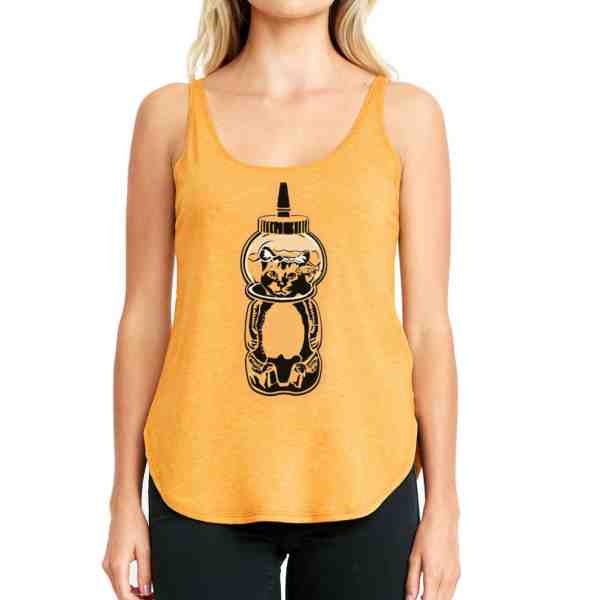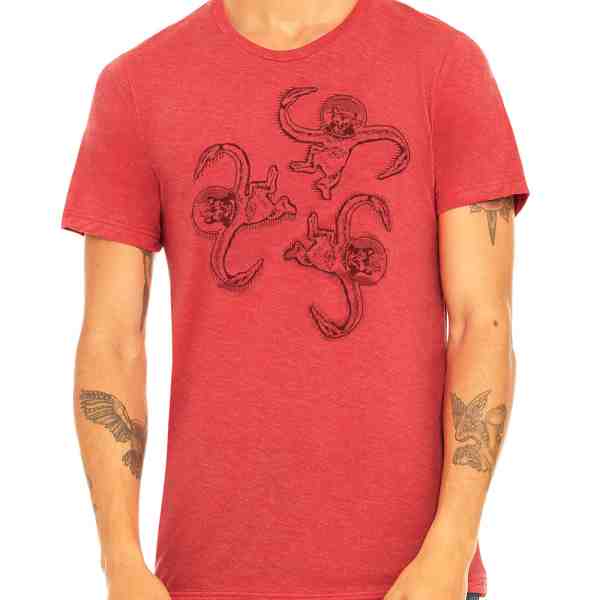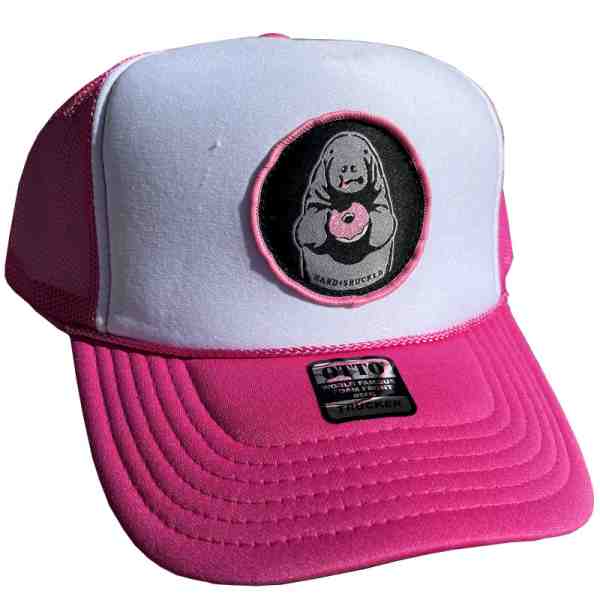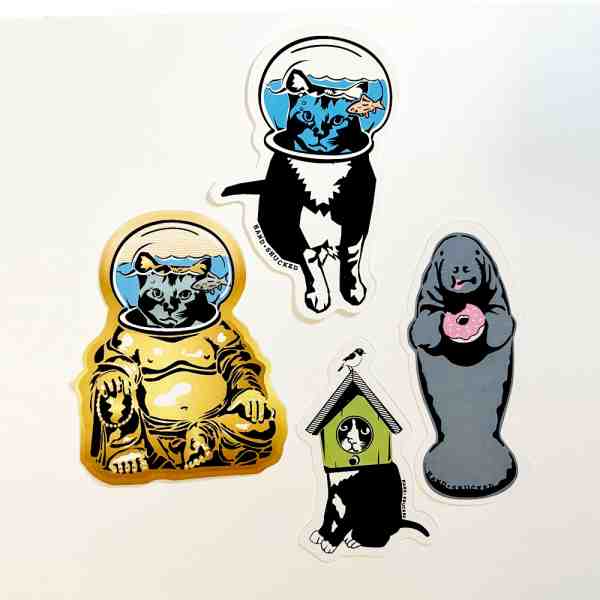Sticker Art Street: Where Creativity Meets the Pavement
Sticker art street is where creativity meets the pavement, changing urban spaces into vibrant outdoor galleries. This unique form of street art uses stickers to make bold statements, engage the public, and add a splash of color to otherwise mundane environments. It’s not just about rebellious self-expression; it’s about connecting with a community, sharing messages, and participating in a global movement.
Why is sticker art street important?
- Encourages creative expression and public engagement.
- Provides an accessible platform for emerging artists.
- Reflects cultural and political commentary.
- Transforms urban spaces with color and individuality.
As Chris Higgins, I’ve witnessed the power of sticker art street to captivate people and inspire change. With my background in graphic design and pop art, I’ve explored how this art form transcends traditional boundaries and brings people together. Stick with me as we dive deeper into sticker art street, exploring its origins, techniques, and impact on urban landscapes.
The Evolution of Sticker Art Street
Sticker art street has a fascinating history that traces back to the vibrant punk scene of the late 20th century. This subculture played a pivotal role in the evolution of sticker art. Punk bands and fans used stickers as a quick and effective way to promote their music and spread their rebellious messages. Stickers became a canvas for punk ideology, allowing artists to bypass traditional media and connect directly with their audience.
Skateboarding culture also significantly influenced sticker art street. Skateboarders used stickers to personalize their boards and gear, turning them into mobile art pieces. This practice quickly spread, and soon stickers adorned everything from street signs to public benches. The skateboarding community acceptd stickers not only for their aesthetic appeal but also for their ability to communicate a sense of identity and belonging.
The origins of sticker art as a recognized form of street art can be traced to the late 1980s. Shepard Fairey’s Andre the Giant Has a Posse project, launched in 1989, is often cited as the first major sticker art campaign in the United States. Fairey’s stickers, which featured a stylized image of the wrestler Andre the Giant, were plastered across cities, sparking curiosity and conversation. This project demonstrated the power of stickers to engage the public and deliver a message.
In Europe, the I Sauri project, initiated in 1993, marked the beginning of sticker art’s rise outside the United States. The project showcased the potential of stickers as a medium for artistic expression and cultural commentary. As sticker art gained popularity, artists began to experiment with different techniques and materials, leading to the diverse and dynamic art form we see today.
The rise of sticker art street was also fueled by its accessibility. Stickers are easy to produce, inexpensive, and can be applied quickly, making them an ideal medium for artists who want to make an impact without the risks associated with traditional graffiti. This accessibility has allowed sticker art to flourish, creating a global community of artists who continue to push the boundaries of creativity.
Sticker art street is more than just a form of self-expression; it is a testament to the power of art to transform public spaces and engage with communities. As we explore the techniques and materials used in sticker art street, we’ll see how this art form continues to evolve and inspire artists around the world.
Techniques and Materials in Sticker Art Street
Sticker art street thrives on creativity and innovation, largely due to the diverse techniques and materials artists use. One popular material is the eggshell sticker. Named for its tendency to break into small pieces when removed, much like an eggshell, this type of sticker is favored for its durability and resistance to removal. Eggshell stickers are made from a mix of paper and plastic, ensuring they withstand the elements and remain a part of the urban landscape for a long time.
Another staple in sticker art street is the Label 228, a free paper sticker provided by the United States Postal Service. Originally intended for mailing purposes, these labels have been adopted by artists for their accessibility and ease of use. Artists often hand-draw their designs directly onto Label 228s, making each sticker a unique piece of art. The adhesive on these labels is quite strong, leaving a sticky residue that makes them challenging to remove.
Sticker artists employ a range of techniques to create their work. Many opt for hand-drawn designs, using markers, pens, or paint to craft detailed images or messages. This method allows for a personal touch and makes each sticker a one-of-a-kind creation. Hand-drawn stickers are particularly popular for their authenticity and connection to traditional art forms.
For those looking to produce stickers in larger quantities, commercial printing offers a practical solution. Artists can design their stickers digitally and have them printed using professional services. This method allows for high-quality, consistent results and is ideal for artists who want to distribute their work widely. Commercial printing also opens up possibilities for experimenting with different finishes, such as gloss or matte lamination, to improve the visual appeal of the stickers.
The variety of techniques and materials available in sticker art street allows artists to express themselves in countless ways. Whether through the tactile nature of hand-drawn designs or the polished look of commercially printed stickers, artists continue to push the boundaries of what stickers can achieve in street art.
Sticker Art Street: A Platform for Expression
Sticker art street isn’t just about colorful designs or catchy slogans—it’s a platform for expression. Artists use it to share political messages, make social commentary, and engage in culture jamming. Each sticker is a mini billboard, carrying a message for all who pass by.
Political Messages
Many sticker artists use their work to address political issues. Stickers can be a quick and effective way to spread awareness or protest against policies. For example, Cristina Vanko’s “I am Coal” project uses stickers to highlight objects powered by coal, raising awareness about climate change. This type of art is often called “smart vandalism” because it cleverly challenges viewers to think about their environment.
Social Commentary
Sticker art is a powerful tool for social commentary. It offers artists a way to speak out about societal issues, from inequality to consumerism. Shepard Fairey, known for his “Andre the Giant has a posse” campaign, uses stickers to provoke thought about the media and advertising. His work encourages people to question the messages they see every day.
Culture Jamming
Culture jamming is another key element of sticker art street. This practice involves subverting or mocking mainstream culture and media. Stickers often parody well-known brands or slogans, turning them on their heads to make a point. This approach not only entertains but also prompts people to reconsider the cultural norms they take for granted.
Sticker art street allows artists to connect with the public in a direct and unfiltered way. Whether it’s through a political statement, social critique, or a bit of culture jamming, stickers have the power to transform ordinary urban spaces into vibrant canvases for change.
The Global Impact of Sticker Art Street
Sticker art street has evolved into a global movement, crossing borders and bridging cultures through its universal appeal. It’s not confined to one city or country; instead, it thrives in urban landscapes around the world, showcasing the creativity of international artists and making its mark in exhibitions and public spaces.
International Artists
Artists from diverse backgrounds contribute to the vibrant mix of sticker art street. From the iconic works of Shepard Fairey in the United States to the innovative projects of European artists like I Sauri, sticker art is a global conversation. These artists use stickers as a medium to express their unique perspectives, often addressing local issues while resonating with a worldwide audience.
Exhibitions
Sticker art street has gained recognition in the art world, with exhibitions dedicated to this dynamic form. Shows like “Re-Writing the Streets 2.0” introduce sticker art to new audiences, providing educational resources and highlighting its cultural significance. These exhibitions often feature curated collections of stickers, grouped by artists, themes, and geographic locations, offering a comprehensive look at this contemporary movement.
Urban Landscapes
The urban landscape is the ultimate canvas for sticker art street. Cities like New York, Berlin, and Tokyo are transformed into living galleries, where stickers can be found on walls, street signs, and public transport. This art form adds a layer of visual intrigue to cityscapes, challenging the perception of public spaces and encouraging passersby to engage with their surroundings in new ways.
Sticker art street not only decorates urban environments but also sparks dialogue and fosters community. Its global reach and ability to adapt to various cultures make it a powerful tool for artistic expression, connecting people from all walks of life through the simple act of sticking art on a surface.
Frequently Asked Questions about Sticker Art Street
Are stickers considered street art?
Yes, stickers are a vibrant part of street art. Sticker art street is a form of street art that uses stickers to display images or messages in public spaces. It’s similar to graffiti but often quicker and easier to apply. Stickers can convey political messages, social commentary, or simply be a creative outlet. They are a popular choice for artists because they allow for fast and often anonymous expression.
Is sticker art legal?
The legality of sticker art depends on where it’s placed. Applying stickers to public or private property without permission is often considered vandalism or trespassing. This can lead to legal consequences, including fines or even arrest. However, many artists find ways to legally showcase their work, such as collaborating with businesses or participating in exhibitions. Always seek permission before placing stickers on surfaces that are not your own.
Where can I sell my art as stickers?
There are many places to sell sticker art. Online marketplaces like Etsy and Redbubble allow artists to reach a global audience. Social media platforms such as Instagram or TikTok can also help artists build a following and sell directly to fans. Some artists choose to sell their work through local shops or at art fairs. Wherever you choose to sell, make sure to market your stickers effectively to attract buyers.
Conclusion
Sticker art street is a dynamic blend of creativity and urban expression. At Handshucked Art and Designs, we celebrate this unique art form by crafting distinctive artworks that reflect the vibrancy of street culture. Our pieces, such as the “Lost Cat” and “Hungry Manatee” series, capture the essence of street art’s spontaneity and boldness.
Our journey in the art and design industry is driven by a passion for creativity and a commitment to bringing original art to the world. We believe that sticker art street is not just about visual appeal but also about conveying messages and sparking conversations. This aligns with our mission to create art that speaks to people on a personal level.
Whether you’re drawn to the rebellious spirit of street art or the intricate designs of our collections, Handshucked offers something for everyone. Explore our range of unique artworks and hand-printed apparel, and let your walls tell a story of creative expression.
To find more about our products and services, visit our Handshucked Art and Designs page. Join us in embracing the art of the streets and bringing its energy into your life.






